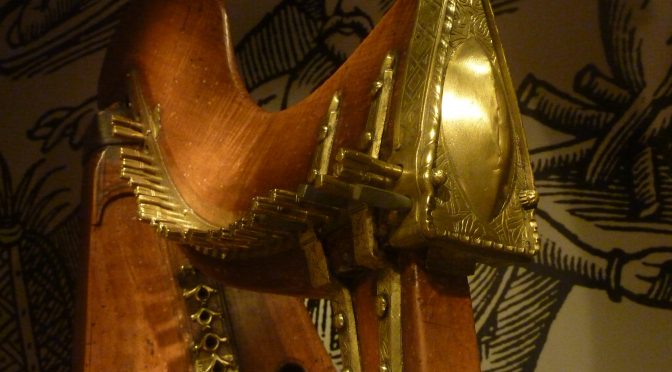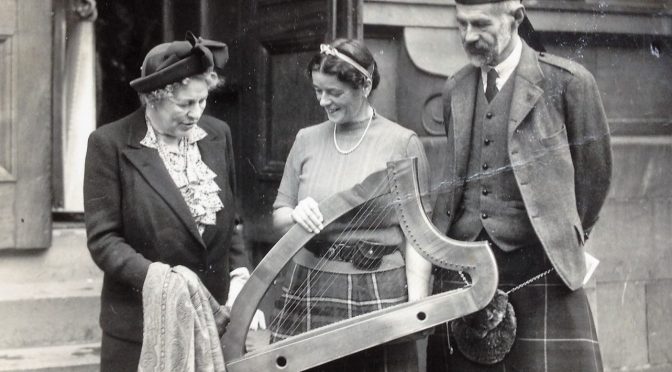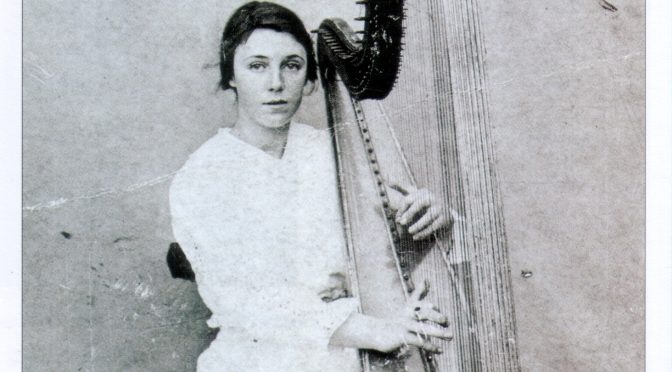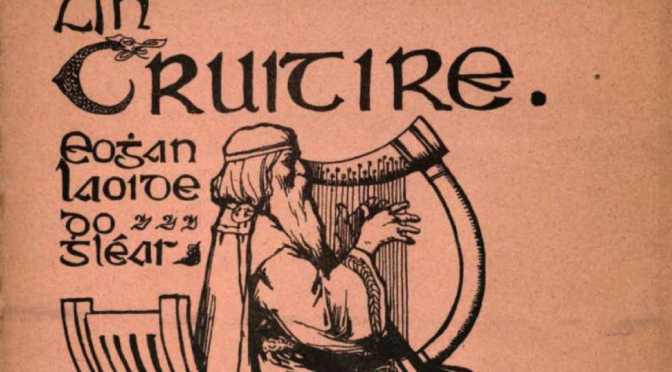Patrick
tolLangan
my very old teacher
a pupil of Hempson
told me
He plucked the
strings with his
long nails
J P Sherwin
Category: research
Otway harp string holes
While working on something else I came across this from last year which I had meant to write up.
Understanding the tuning and stringing of an old harp requires knowledge of string lengths and angles. This basically means measuring between the tuning pin and the little hole in the soundboard where the string goes in. But Ann Heymann pointed out to me years ago that on the Castle Otway harp, you can’t see a lot of those holes, because the metal strap down the middle does not line up with the string holes in the wood.
Knowing about na comhluighe, but not using it?
Patrick Byrne explained to the collector, John Bell, about the unison strings on a Gaelic harp which are called na comhluighe, or the sister strings:
The open on the bass string of the Violin is one of the Sisters on the harp. The next string below on the harp and it, were tuned in unison, for which reason they were called the sisters. These two unison notes are sometimes called, and in ancient times were called, Ne Cawlee – or the companions. Afterwards they were called the Sisters.
The harp is tuned to the Sister note
(John Bell’s Notebook, cited in Henry George Farmer, ‘Some Notes on the Irish Harp’ Music & Letters vol. XXIV, April 1943)
But did Byrne actually use na comhluige on his own harp?
Continue reading Knowing about na comhluighe, but not using it?
Gaelic harps in 18th century Scotland
As part of my work to re-connect with the most recent threads of the old Gaelic harp traditions, I have been working a lot on the late 18th and early 19th century Irish tradition-bearers. In some ways that work is easy; we have portraits, we have their harps in the museums, and we have live transcriptions of their playing, both treble and bass.
But what about the Scottish side of the tradition? What do we actually know about the 18th century Scottish harpers? To begin, what do we know about the instruments they were playing?
winding strings on to tuning pins
Having just re-wound a harp that had its strings wound on to the front of the tuning pins, I wondered if there was any evidence as to which way the old harpers wound their pins.
Edith Taylor of Rahoy
I first became aware of Edith Taylor many years ago, from reading Frances Collinson’s book The traditional and national music of Scotland. After describing briefly the wire-strung clarsachs made by Arnold Dolmetsch, he writes:
Miss Edith Taylor, the first Honorary Secretary of Comunn na Clàrsaich, has one of these on which she once played for the writer at a B.B.C. ‘Country Magazine’ programme from Lochaline, Morvern.
Left and Right
People have talked for a long time about left and right orientation. Sometimes the question is, why did the old harpers play with their left hand in the treble and their right hand in the bass? And sometimes the question is, what should we do now?
Continuity of tradition
It is a common trope in the world of historical Gaelic harp studies that the tradition was “broken” in the 19th century, that the revivers of the harp of Ireland and Scotland had no contact with the last of the old tradition-bearers. But yesterday, Sylvia asked me if I was sure that this was true, and so I started to wonder.
Carlione
Looking through the books from the Jimmy Shand Collection in Dundee library for a tune to play on Saturday week at the free community concert in Dundee, I noticed “Carlione a Favourite Irish Tune” in Neil Gow’s third collection (1792). It is Dr John Stafford, or Carolan’s Receipt (no. 161 in Donal O’Sullivan’s index).
Whether or not I’lI get it up and running to play in two weeks time, it got me thinking about tunes titled with strange variants of Carolan’s name.
Hand position
I’m working on the 3rd edition of my book Progressive Lessons. I decided to be more focussed and concentrate only on the three beginners’ tunes from the testimony of Patrick Quin and Denis O’Hampsey. Looking again at the manuscript sources, I am seeing a lot of things that I had not paid attention to before, and which are worryingly different from the way I have been playing and teaching these tunes up to now.









